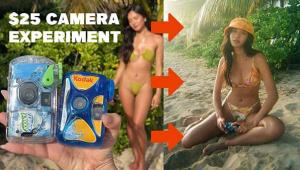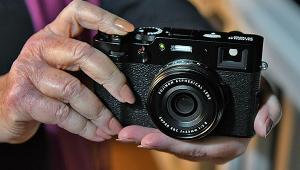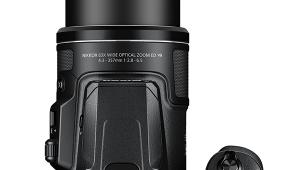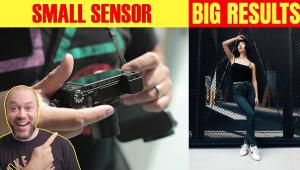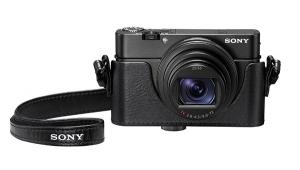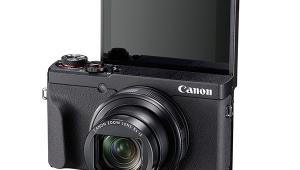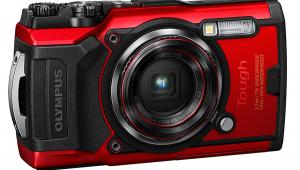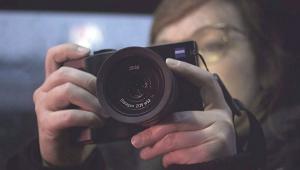New 20MP DxO One Imaging Device Promises DSLR-Quality Images Via Your iPhone (Hands-On Preview)

DxO, the Paris, France-based company known mostly for software, introduced an intriguing new piece of imaging hardware this morning: a 20.2-megapixel camera with a 1-inch sensor and an f/1.8 lens that fits in your pocket and attaches to an iPhone. Called the DxO One, the 3.8-ounce, 2.65-inch tall camera, connects to an iPhone via the phone’s Lightning port, creating what the company hopes will be a photographic one-two punch to conquer the smartphone conundrum: that is, how do you shoot DSLR-quality images from a slender, inherently limited phone.
Rather than summoning a magical photography app or attaching a clunky lens adapter to the front of the iPhone, DxO does it by, essentially, taking the phone out of the equation. With the DxO One connected by the Lighting interface, all the picture taking is done with the 20.2MP CMOS BSI sensor and fast f/1.8, 32mm-equivalent aspherical lens with a variable 6-blade iris in the device. The iPhone merely serves as the conduit, viewing screen, and familiar interface with a touchscreen control display.
Shutterbug got a hands-on demonstration of the DxO One just prior to launch and we came away impressed with how this highly portable solution operates. There’s a free DxO One app that does all the work on the iPhone for the device, offering a variety of capture modes including full Manual, Shutter and Aperture Priority, and multiple scene modes.
Overall, the experience seemed seamless and easy and the image quality, to our brief inspection, seemed quite good. (Obviously we’ll have to test this further when we get our hands on a finished unit.)
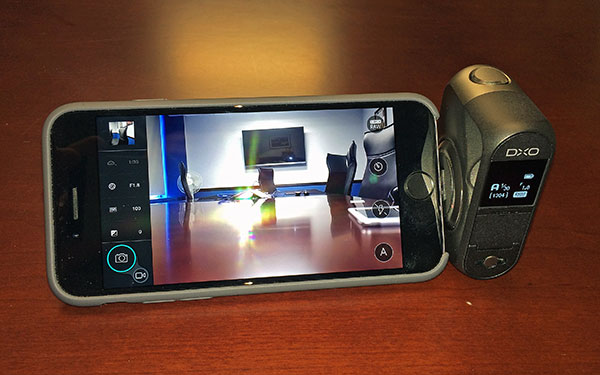
Now the not-so good news. While the DxO One seems like a must-have device for anyone who wants to get much better quality photos using an iPhone, it won’t be cheap and it won’t be coming until September 2015. The device goes on pre-order starting today for $599.
That’s expensive for such a tiny camera device but it does come, for a limited time, with free licenses of two of DxO’s well-reviewed software products: its Raw image processing app, DxO OpticsPro (Elite Edition, $199 value), and DxO FilmPack (Elite Edition, $129 value), which is designed to digitally reproduce the look of analog films.
Speaking of Raw, the DxO One can capture images in the Adobe’s DNG Raw format as well as in the JPEG format. There’s also a Super Raw image format for shooting in extremely low light, which combines four 20MP Raw images into one shot in the .DXO format, which is only decipherable with the company’s software. (Gotcha!)
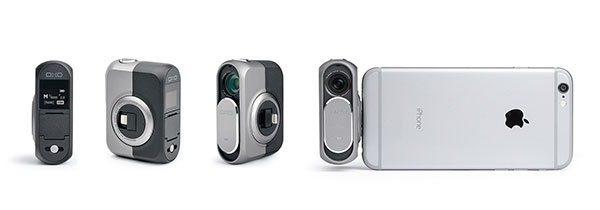
While it may seem a bit like cheating, DxO’s own DxO Mark sensor evaluation service has given the Super Raws from the DxO One’s 1-inch sensor a score of 85, which is what some full frame DSLRs achieve. Regular Raws, meanwhile, scored 70 from DxO Mark. (Take it for what it’s worth.) The 20MP, 1-inch sensor in the DxO One, incidentally, is made by Sony and it's the same one found in the well-reviewed Sony RX100 III compact camera.
Images are saved to a Micro SD card, which is slotted into the tiny device, and there’s a small monochromatic touchscreen display on back to show and adjust basic settings. With the DxO One connected to the iPhone via Lighting, the device can swivel up or down, letting you compose images and shoot video (including 1080p HD at 30p) from a variety of angles.
The DxO One can also shoot slow motion, 720p HD video at 120fps and the device uses the LED of the iPhone for flash photography and as a video light.
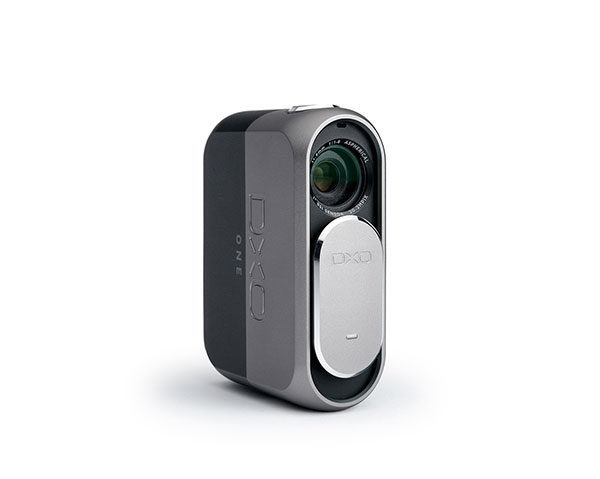
Now here are a couple of things that still need to be worked out. While you can quickly share the images you capture with the DxO One via the connected iPhone to Facebook, there currently are no web-friendly size options offered from the device. So you’re stuck with trying to upload 20MP JPEGs to social media, which can be tricky and time-consuming depending on your connection. Those big files will also eat up precious space on your iPhone if you decide to store them there. (An optimized web-sized image option is on DxO’s to-do list, the company told us.)
There isn’t any WiFi option in the DxO One yet, so you’re dependent on that “old school” hard connection by the Lightning interface. (The DXO spokesperson we met with said the company is “thinking about” changing that.)
And finally, while the DxO One’s electronic shutter offers shutter speeds of 1/8000 second, in our brief time shooting with it, we found it to be rather slow to focus and fire via its shutter button on top of the device. (It actually felt a step slower than shooting images with your iPhone’s camera in regular shooting mode.)
There also aren't any burst shooting modes yet. Hmmm...

These are all things the company hopes it can work out via firmware updates, which can be done directly via Apple’s App store, rather than having to load firmware the old-fashioned way, i.e. via a memory card etc.
All-in-all the DxO One seems like one of the more interesting iPhone photography solutions we’ve seen yet. If it truly makes it easy to take DSLR-quality images using a pocket-sized device connected to your iPhone, it could change photography forever. Definitely keep your eye on this One!

